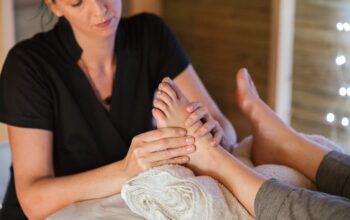Aging may be a natural part of life, but when people begin to show their biological age differs greatly. In fact, the rate at which people age is significantly influenced by their choices, environment, and genetics.
To reverse the visible signs of aging, you first need to understand the underlying causes of your changing appearance. Then you can pinpoint effective treatments, make lifestyle changes, and improve how you look and feel, at any age.
1. Biologic Realities
The human lifecycle promises changes in your appearances, both inside and out. However, the age-related changes impacting your visual appearance are significantly influenced by genetics.
The rate at which your skin dulls, thins, and becomes more prone to drying will be similar to that of your family. Some nationalities and skin tones fare better, but the natural decrease of collagen production and slower cell turnover happens nonetheless.
Boost your skin’s resiliency, improve moisture retention, and encourage cell turnover by incorporating an anti aging treatment into your routine. Prescription-grade treatments like retinol, a concentrated formula of powerhouse vitamin A, can address a myriad of aging concerns. Pair treatments with skin care formulated for aging skin that focus on moisture, which can plump and nourish thinning skin.
If you’re also managing health conditions or illnesses, these factors can increase the rate of aging. Red light therapy reduces lines and wrinkles, but this non-invasive treatment isn’t suited for those whose medications increase light sensitivity. Discuss your concerns with your physician to determine which treatments and methods will work well alongside your current management plan.
2. Behavioral Choices
One of the most malleable factors driving your aging journey is also one of the most difficult to change: your behavior. Lifestyle choices can accelerate aging and even appear to turn back the clock. Assess your current and prior behaviors to uncover driving factors to aging and what you can do today.
Smoking cigarettes and drinking alcohol are widely recognized as habits that can increase the visible signs of aging. Researchers have found that these habits increase the prevalence of forehead wrinkles, crow’s feet, glabellar lines, and facial volume loss. Both have been shown to increase under-eye puffiness too, making the trade-off of these habits significant. Strive to eliminate smoking completely and reduce alcohol consumption.
Excessive sun exposure can also take a toll, leading to visible damage, wrinkles, and even skin cancer. If your job or lifestyle makes sun exposure commonplace, integrate sun-safe practices that you can maintain. Wear daily sunscreen and update your moisturizer with a lightweight, SPF 30+ formula. Apply it to all areas exposed to the sun, including your neck, chest, and hands. Add sun shirts, hats, and sunglasses to your wardrobe to be both sun safe and stylish.
3. Mental Health and Stress
An individual’s mental state is the playlist running in the background of their external life. When one’s mental health is struggling, stress levels are high, and conditions are ignored, aging can accelerate.
Chronic stress due to life’s demands, socioeconomic factors, and even lack of sleep has been shown to advance aging. When the body is constantly in a cycle of fight-or-flight, energy is dedicated to survival tactics, not repairing and restoring. While some early influences of stress may have been out of your control, like your socioeconomic upbringing, others can change.
Take time to reflect on your mental health and stressors today, giving an honest assessment of how you’re navigating life. If you’ve been feeling out of sorts, finding daily life unbearable, or you’re not enjoying normal activities, seek support. Connect with a therapist to help identify what’s influencing these feelings and develop a treatment plan to improve them. Over time, an improved mental state will have a ripple effect on all areas of your life, including your appearance.
In addition to traditional therapy, review your life habits to reduce stress. Initiate a morning routine that allows you to center your mind and body before a busy day. Yoga, stretching, meditation, and journaling can help you work through your thoughts before work and family demand your attention. Assess your external commitments, too, as an over-packed schedule can steal away essential recharge time. Target improving your sleep, too, striving for at least seven hours of sleep nightly, which is often recommended for optimal health.
Manipulate the Aging Process for Benefits Inside and Out
Your lifestyle changes in pursuit of a more youthful appearance are likely to lead to the aesthetic improvement you want. However, these appearance-centric changes may also improve key health factors long-term. Improving sleep habits, reducing stress, and eliminating harmful habits like smoking or excessive sun exposure may offer total health benefits.
Embark on a journey to understand your aging process, the key factors influencing changes, and the methods you’ll try. Document where you begin, making note of your anti-aging goals so you can track your progress. Take photos before you start and plan to take progress photos along the way. As the months pass, you’ll be able to see the visible improvements. Assess, adjust, and maintain your regimen as necessary, and your anti-aging routine will have you feeling and looking your best.



